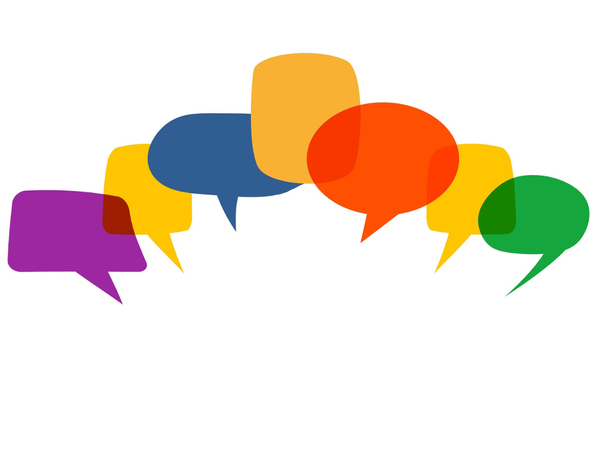Empowering students with language-based learning differences

Siena Blog



The Siena School Blog
Discover, Learn, Celebrate, and Empower
Welcome to Siena's blog, your source for helpful, cutting-edge resources tailored to teachers, parents, and other advocates in the learning differences community. We are dedicated to providing a wealth of curated knowledge spanning various topics, ranging from dyslexia advocacy and awareness to classroom teaching strategies, heritage month profiles, and social and emotional health.
Discover innovative classroom strategies that inspire creativity and foster a love of learning.
Our commitment to social-emotional wellness ensures that we provide valuable insights into healthy student development and self-advocacy.
Discover resources, reading and podcast recommendations, volunteering opportunities, and more for parents in the LD community.
Our important heritage month posts highlight key people, offer reading and podcast recommendations, and more.
Boundaries: At Home, At School, Online

Avg. read time: 3 min.
Mental Health Awareness Month 2023
With Mental Health Awareness Month 2023 winding down, it’s a good time to look ahead to summer and think about how adolescents can continue their good mindfulness and self-care practices over break.
Mental Health and Boundaries
Understanding in-person and online boundaries is important all year, and having unstructured time over summer break might test such boundaries. In our work at Siena this year, we’ve noticed a pattern in the support students have been seeking: how to assert their boundaries firmly but respectfully in their daily interactions.
Part of social–emotional learning involves growing self-awareness, identifying values, and setting boundaries. Here are some ways for adolescents and teenagers to do this:
- Be clear: State your boundaries clearly and succinctly and lead with “I feel” statements, such as “I feel frustrated when you do ____” or “I feel hurt when you do ___.”
- Be firm but kind: When you state a boundary, do so respectfully and at a normal speaking volume. If you have to remind someone of a boundary, continue to be respectful.
- Focus on you: Boundaries are about how you would like to be treated and what you will do if you are not treated that way. Boundaries do not give you control over other people’s behaviors.
- Seek support from an adult: If you are clearly and respectfully stating your boundaries and your boundaries are still being violated, talk to a trusted adult for support.
Parents can help their students practice healthy boundary setting at home. If your child struggles with this, work with them to pick a boundary and practice enforcing it within your family. In addition, model healthy boundary setting for your children.
How Parents Can Help Teens with Online Boundaries
Students—particularly middle schoolers who might have their first cell phone—sometimes need help understanding responsible technology use. Students at this age may not be developmentally ready for the stress that comes from navigating daily digital communications.
Here are a few suggestions to guide your student with social interactions using technology:
- Monitor their communication: Let them know that you will periodically review not only the communication they send out but also what is sent to them.
- Set aside time to review texts: Due to the nature of texting and online communication, students are often forging ahead with minimal guidelines. When you talk through text conversations, explore how certain language can be misunderstood and cause hurt feelings. Parents could then brainstorm ways to communicate more successfully.
- Initiate parent-to-parent communication: If you see a text message that you think another parent should know about, please arrange a time to speak with them. Children are going to make mistakes, and families are encouraged to support each other as we all navigate the complicated world of digital communication.
- Encourage a variety of in-person, real-life relationships: Learning how to negotiate with others face-to-face and resolve differences are among the many interpersonal skills necessary in adult life. When students develop these face-to-face skills, they can adapt these to online skills more easily.
Here are additional suggestions that came from students and adults we’ve talked to this year:
- Encourage downtime from tech: Students often receive tons of messages and phone calls, including in the middle of the night. An easy way to give students a mental break and avoid such disturbances is putting the phone in a different room or powering it down.
- Turn off read receipts: This notifies the sender that the receiver has read the text message and can cause conflict if the receiver does not answer right away and feels slighted or ignored.
- Monitor cell phone usage: This is extremely important for helping our students navigate their online lives. If you see your child is sending multiple text messages in a row or calling someone multiple times, please discuss boundaries. Have them send one message, make one phone call, and then stop.
- Utilize tech apps: Whether it is on your child's phone, laptop, or video game console, using tech apps to control the amount of time they spend logged on is super helpful. Popular social media platforms like Instagram and TikTok also have useful tools for parental controls. You can “set it and forget it” and don't have to constantly monitor usage.
Additional Resources for Mental Health Boundaries
Parents interested in learning more about online boundaries for adolescents and teenagers can look up Delaney Ruston’s film Screenagers: Growing Up in the Digital Age, as well as Devorah Heitner’s Raising Digital Natives. Heitner is also slated to publish a new book in September 2023, Growing Up in Public.
For additional information from The Siena School blog to help navigate students’ social–emotional health, see Haley’s posts about learning differences and confidence from May 2023 and about social media and mental health from May 2022.
Siena’s mission-focused innovative dyslexia education is designed for students in grades 3-12 with language-based learning differences on campuses in Silver Spring, Maryland, and Oakton, Virginia.
